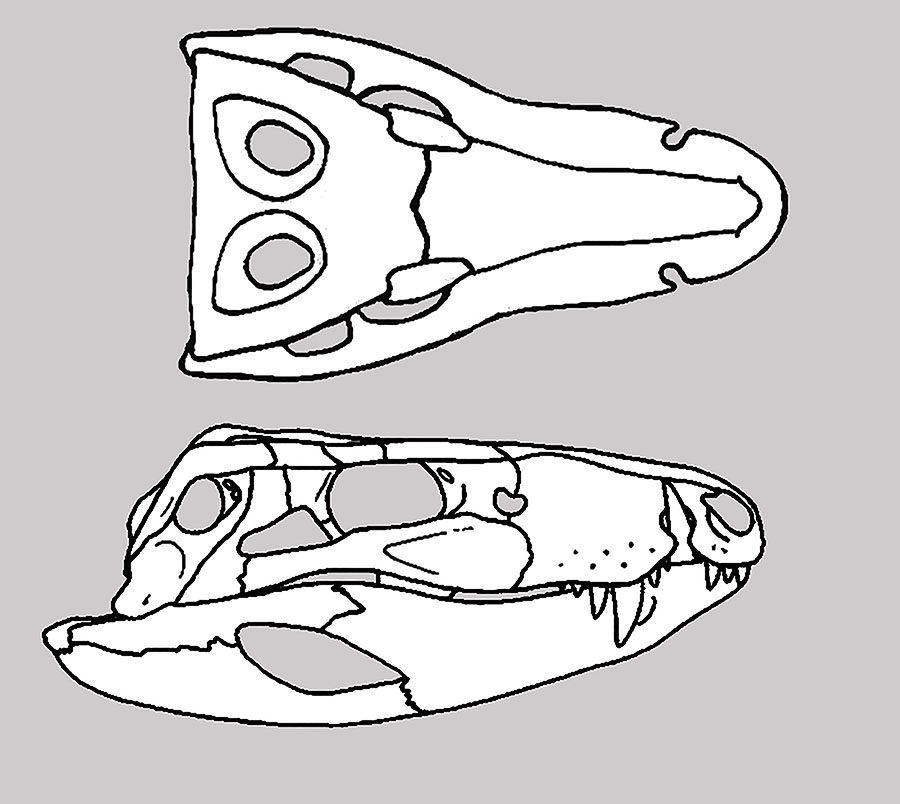
Genus: Pissarrachampsa MONTEFELTRO, LARSSON, & LANGER, 2011
Etymology: The epithet is a combination of the local name for the fossil bearing
sandstones, picarra, and Greek (Latinized) champsa, "crocodile."
= Genus: Nova MONTEFELTRO & LANGER, 2010
Species: sera MONTEFELTRO, LARSSON, & LANGER, 2011
Etymology: Latin word meaning 'late', in reference to the collection of the
holotype. It was the last fossils found during the 2008 expedition and were
about to be left behind because of the tight schedule. In addition, sera is
also a homage to the Minas Gerais state, where the fossils were found, the
flag of which contains Virgil's inscription: "Libertas Quae Sera Tamen",
meaning
"Freedom Albeit Late".
Holotype: LPRP/USP 0019
Locality: Inhaumas-Arantes Farm, Campina Verde municipality, 19°20'4.18"S, 49°55'12.9"W, Minas Gerias State, Brazil.
Horizon: Vale do Rio do Peixe Formation, Bauru Group.
Biostratigraphy:
Age: Turonian Stage, Uppermost Gallic Subepoch-Santonian Stage, Lower Senonian Subepoch, Lower Gulf Epoch, Late Cretaceous.
Material: A nearly complete cranium, lacking only the anteriormost portion of the rostrum, right palpebrals, and mandibles.

Pissarrachampsa serra (modified from Montefeltro et al. 2011).

Pissarrachampsa serra (modified from Montefeltro et al. 2011).
Referred material:
LPRP/USP 0018: A partial rostrum and anterior palate with teh anterior portion of the mandibles articulated.
GODY, BRONZATI, ELTINK, MARSOLA, CIDADE, LANGER, & MONTEFELTRO, 2016
LPRP/USP 0739: An isoalted pes.
LPRP/USP 0740: Isoalted left ilum.
LPRP/USP 0741: Isoalted right tiba.
LPRP/USP 0742: Isolated left ilum.
LPRP/USP 0743: Partial isoalted left femur.
LPRP/USP 0744: Articulated right femur, tibia, and fibula.
LPRP/USP 0745: Isolated right manus.
LPRP/USP 0746: Isolated right pes.